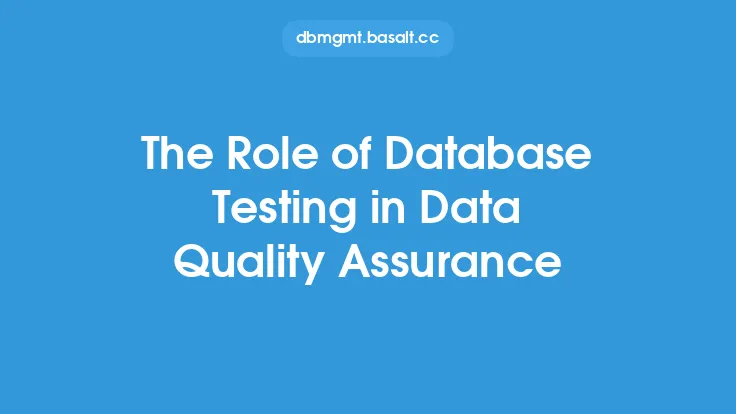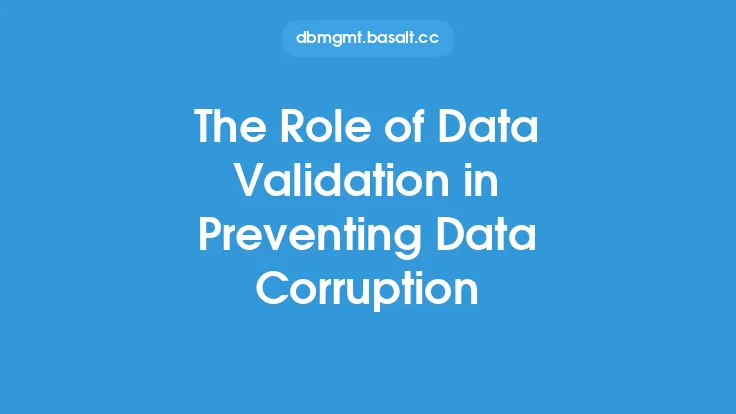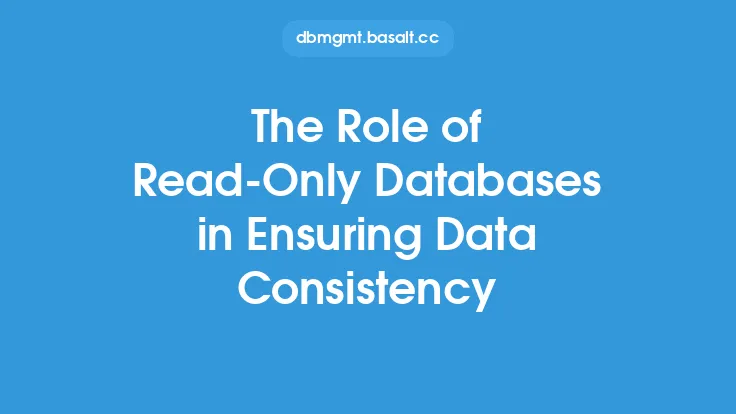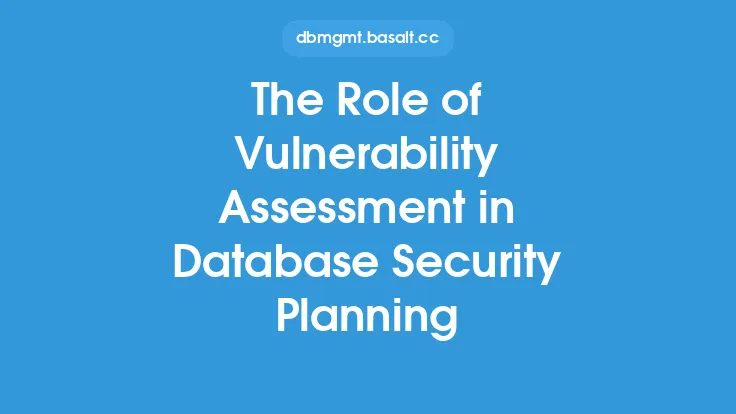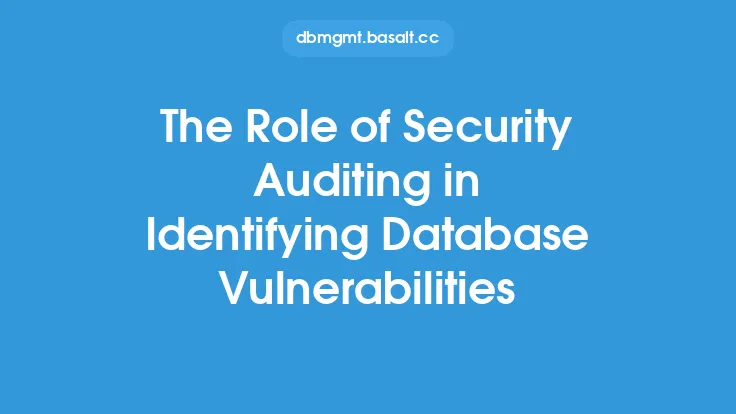Database authorization plays a crucial role in preventing data breaches by ensuring that only authorized users have access to sensitive data. In today's digital age, databases are a treasure trove of sensitive information, and protecting them from unauthorized access is of paramount importance. Database authorization is the process of granting or denying access to database resources based on a user's identity, role, or privileges. It is a critical component of database security, and its importance cannot be overstated.
Introduction to Database Authorization
Database authorization is a mechanism that controls access to database resources, such as tables, views, and stored procedures. It ensures that users can only perform actions that they are authorized to perform, thereby preventing unauthorized access to sensitive data. Database authorization involves creating and managing user accounts, roles, and privileges, as well as defining access control rules and policies. The goal of database authorization is to provide fine-grained control over access to database resources, ensuring that sensitive data is protected from unauthorized access.
Types of Database Authorization
There are several types of database authorization, including discretionary access control (DAC), mandatory access control (MAC), and role-based access control (RBAC). Discretionary access control is a type of authorization that grants or denies access to database resources based on a user's identity or group membership. Mandatory access control, on the other hand, is a type of authorization that grants or denies access to database resources based on a user's clearance level or sensitivity label. Role-based access control is a type of authorization that grants or denies access to database resources based on a user's role or job function.
Database Authorization Techniques
There are several database authorization techniques that can be used to prevent data breaches. One technique is to use encryption to protect sensitive data. Encryption ensures that even if an unauthorized user gains access to the database, they will not be able to read or exploit the sensitive data. Another technique is to use access control lists (ACLs) to control access to database resources. ACLs are lists of users or groups that are granted or denied access to specific database resources. Database administrators can also use views to control access to sensitive data. Views are virtual tables that provide a layer of abstraction between the user and the underlying data, allowing database administrators to control what data is visible to which users.
Database Authorization and SQL
Database authorization is closely tied to SQL, the standard language for managing relational databases. SQL provides a number of features that support database authorization, including the GRANT and REVOKE statements. The GRANT statement is used to grant privileges to users or roles, while the REVOKE statement is used to revoke privileges from users or roles. SQL also provides a number of system views and tables that provide information about database authorization, such as the sysusers system view, which provides information about database users.
Database Authorization and Compliance
Database authorization is also closely tied to compliance with regulatory requirements, such as the Payment Card Industry Data Security Standard (PCI DSS) and the Health Insurance Portability and Accountability Act (HIPAA). These regulations require organizations to implement robust database authorization mechanisms to protect sensitive data. Database administrators must ensure that their database authorization mechanisms are compliant with these regulations, which can be a complex and time-consuming task.
Best Practices for Database Authorization
There are several best practices for database authorization that can help prevent data breaches. One best practice is to use least privilege, which means granting users only the privileges they need to perform their jobs. Another best practice is to use strong passwords and multi-factor authentication to prevent unauthorized access to the database. Database administrators should also regularly review and update user accounts, roles, and privileges to ensure that they are still valid and necessary. Additionally, database administrators should use auditing and logging to monitor database activity and detect potential security threats.
Common Database Authorization Mistakes
There are several common database authorization mistakes that can increase the risk of data breaches. One mistake is to grant excessive privileges to users or roles, which can allow unauthorized access to sensitive data. Another mistake is to use weak passwords or fail to implement multi-factor authentication, which can allow unauthorized users to gain access to the database. Database administrators should also avoid using default passwords or accounts, which can be easily exploited by attackers. Additionally, database administrators should avoid failing to regularly review and update user accounts, roles, and privileges, which can lead to stale or unnecessary accounts that can be exploited by attackers.
Conclusion
In conclusion, database authorization is a critical component of database security that plays a crucial role in preventing data breaches. By understanding the different types of database authorization, techniques, and best practices, database administrators can implement robust database authorization mechanisms that protect sensitive data from unauthorized access. Additionally, by avoiding common database authorization mistakes, database administrators can reduce the risk of data breaches and ensure compliance with regulatory requirements. As the threat landscape continues to evolve, database authorization will remain a critical component of database security, and its importance will only continue to grow.
